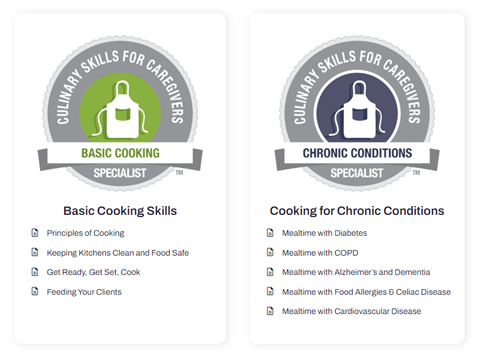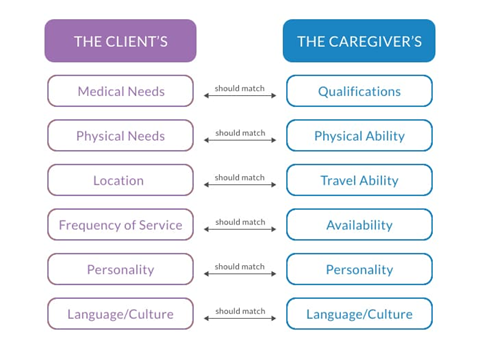

1 in every 2 clients will end up leaving your agency—we’ve surveyed over 100 thousand clients to find out why. Learn what your clients are saying about your agency behind closed doors and what they wish you’d do to improve.
W hat your clients think about you generates over 35% of your agency’s total income, making their opinion worth $582,700.
But less than half of them are currently satisfied.
If you’ve ever wished you could be a fly on the wall to listen to what your clients are saying about you to their friends: you’re in luck.
We survey over 9,000 pre- and post-acute care clients every month to reveal their top 10 complaints, with actionable steps to resolve each, so that you can start delivering on what your clients wish you knew.
Find out what they want you (and your staff) to do differently as we count down to their number one complaint:
While it’s in the job title, it’s a practice that is easily taken for granted in the field: “care.”
Although your caregivers may be checking all the boxes of their job description, clients are looking for companionship that makes them feel less like a checklist and more like a friend.
As caregivers are often the only social interaction a client receives, caregivers have the unique opportunity to not only help their clients feel less alone as they work, but to build life-changing relationships while on the job.
Likewise, family members hire your agency with the expectation that you will provide someone they can trust to take care of their loved ones with dignity, respect, and friendship.
And it begins with bridging the generational gap between client and caregiver.
Steps to resolve this:
As 1/3 of the American labor force is made up of Millennial or Gen Z employees, the age difference between most of your employees and clients is no secret.
Bridging this generational divide is not only crucial to client satisfaction, but can also be argued as the secret to providing meaningful and fulfilling work outcomes for the rising generation.
Empower your care staff to build relationships with their clients:
Start your caregiver’s first impression on a positive note by briefing them on their clients’ care plan. Clearly communicate their client’s expectations so your caregiver is ready to deliver from day one.
Encourage schedulers to keep notes of their own on each client and caregiver to help them better match personalities.
Encourage every caregiver to document personal details about each client in their care, such as how they like their eggs done, when they like to read their morning paper, how they like to spend their afternoon, and what types of tasks they expect to be done to guide any caregivers who may need to fill in while the assigned caregiver is unavailable.
Designate a member of your office staff to contact each client after receiving care from a new employee to assess compatibility, gather feedback about their experience, and record any improvements that their caregiver could make.
Encourage your care staff to show interest in their clients’ interests, hobbies, and memories by training them in soft skills such as: Customer Service in Healthcare, Building Trust and Confidence, and Enhancing Attention to Detail.
The little things your caregivers do define your agency’s reputation—and it’s all being done behind your clients’ closed doors.
Which is why listening to what your clients experience every day is the only way to know that they’re frustrated with caregivers arriving late, leaving before the end of their shift, or not showing up at all. As some clients are on a strict schedule, having a caregiver show up late could result in being left unattended or cause an inconvenience for family members who have to stay longer as they miss out on those extra 10-20 minutes they’re paying for.
According to your clients, your caregivers are also not completing what is expected of them, are spending most of the time on their phones, and are arriving in unsuitable attire.
Steps to resolve this:
Don’t be left wondering how your employees are acting when you aren’t looking. Train them to deliver polished, quality care before they even step inside your clients’ homes.
Making your employees accountable for their actions starts by clearly communicating the quality of care your agency expects:
Prioritize soft skill training: Never has soft skill training in the workplace been so important as in environments where you don’t see your employees every day. When you consider the generational gap between employee and client, teaching simple manners to employees who care for a generation raised on propriety will go a long way. When you position punctuality and personability as just as important as the hard skills, your caregivers will begin to do the same.
Standardize work attire: It’s best practice to require your care staff to wear scrubs or a uniform while in their clients’ homes. This will help your caregivers communicate professionalism and consistency on behalf of your agency. Offering branded company clothing that can be used while on the job will also add a personal touch and give your caregivers a variety of company-approved attire to represent your agency.
Get a second set of eyes: Hold demonstration performance reviews where a caregiver’s mentor or supervisor attends a caregiver’s shift to give them feedback on what they’re doing well and what improvements they need to make.
Keep following up with your clients: The only way you can know if your employees are embodying your agency’s mission is by asking the ones they care for. Make it easy for your clients to be heard by reaching out to them to gather their feedback and hear their concerns on a regular basis.

Measure and improve client/caregiver loyalty, learn where you can improve, and boost retention across the board—while saving time for you and your team
Clients are finding their desired tasks are being left uncompleted and are tired of being assigned caregivers who wait until they’re told what to do. They feel they are being left in the dark about what they can and can’t expect from their caregivers.
Although you may know what your agency does, your employees and clients are unsure. Inform your clients of the services your agency provides before they let their assumptions lead to disappointment.
Steps to resolve this:
Miscommunication leads to dissatisfaction. Your employees and clients need to know what your agency expects of them to build a mutually satisfactory and successful relationship.
Clarify your company’s messaging from the start of your clients’ and caregivers’ first interaction with you:
Clearly outline your agency’s services, specialties, and policies in a written contract while acquiring a new client and review them with current clients: Let your clients know what they’re signing up for and what they can expect from your agency from the start. Before the blame is put on your employees and your agency’s capability is questioned, give your clients and their families a resource that outlines what you can and can’t offer them as an agency.
Review the care plan with both client and caregiver to create clear expectations that everyone agrees on: As caregivers perform based off the information provided to them in their client’s care plan, both the caregiver and client should review the care plan before care begins to ensure everyone is on the same page. This will help your clients know what they can expect their caregivers to do for them daily.
Ensure consistent quality of care by training all caregivers to start on the same level: It’s not just your clients who are confused on their caregiver’s expectations—your employees need to know what their job responsibilities do and don’t entail as well. It’s important to train everyone in: the basics of light housekeeping to know what types of household chores clients can expect of them, your agency’s policy for driving clients to run errands, and what daily responsibilities they are expected to do every day on top of their client’s care plan.
While this seems like an easy complaint to skip past, the number of clients who stated they would appreciate if your caregivers had basic cooking skills was staggering.
While we recognize that a caregiver isn’t hired to be a personal chef, sometimes clients do not have the ability to feed themselves or would appreciate being cared for in a small way with a simple dish.
In fact, most clients reported just wanting to be able to rely on their caregivers to make them a grilled cheese sandwich, fry an egg, or prepare a small meal.
Steps to resolve this:
Stand out as an agency by training your caregivers with basic cooking skills so they can take care of your clients as if they were their own loved ones. Care staff who learn culinary skills for the workplace improve health outcomes when they are given the tools to manage nutrition for chronic conditions.
Activated Insights Training offers culinary skill training courses that will help your care staff know what types of meals are reasonable to prepare for clients and give them greater confidence in understanding how to fulfil their client’s needs.

It’s also helpful to equip your caregivers with a few easy recipes with instructions to have on hand to ensure they don’t feel overwhelmed when a client needs to eat.

The industry’s first training series created just for home care schedulers. Available for a limited time only.
Many clients complain that their caregiver isn’t scheduled to start their shift until hours after they needed them most or are leaving before they’ve met all their needs for the day.
As caregiver shortages continue, lack of staffing makes it difficult to ensure there is always someone scheduled to take care of a client during their desired hours.
But before the industry-wide staffing shortage induces further panic, the solution isn’t to hire more caregivers. Instead, strategically place the staff you do have in the hours they’re needed the most.
Steps to resolve this:
Not every client requires care at the same time or during office hours. Listen to your client’s and their family’s needs to determine when they believe care would be the most helpful, and hire employees based on those hours.
In a recent episode of our podcast, Miki Rossanis, Head of Clinical Development at Sensi.AI shares how artificial intelligence technology can help families and agencies determine what time of day a client needs the most help and what kind of physical care they need:
“In one scenario, there was a period of the day where Sensi was picking up on a lot of cognitive anomalies where the client was very confused, forgetful, disorientated, and was making a lot of distressed phone calls to family members.
“By using the Sensi data, they were able to implement physical care with the client’s consent and understanding of when they really needed care. It helped her see that she wasn’t going to have someone with her in her home 24/7, just during the period where there was more difficulty. This provided her with that first step to receiving physical care, enabled the home care agency to make more informed decisions on her care, and put the family at ease knowing that their loved one was being cared for during the period where she really needed it.”
Be sure to personally follow up with your clients to see if their caregivers are showing up during their scheduled hours and to have your schedulers update their preferred hours.
We get it; it’s hard to match a single caregiver’s schedule perfectly with a client. However, clients are seeking to build relationships with their caregivers and need to be able to trust and get along with the people who come into their home.
The issue clients run into is when their regular caregiver can’t make their shift and they’re assigned someone who isn’t qualified to meet their needs or are just left without a caregiver for the day.
Clients want to have consistent caregivers they can rely on to take care of them and who understand their needs.
Steps to resolve this:
While you can’t guarantee that a client won’t see more than one caregiver, fulfilling their needs is a team effort. Your whole team will need to communicate with each other to ensure everyone is up to speed on the types of clients and specialties they may need to work with:
Use the needs of your current clients as a guide for which topics your entire care staff needs to be trained on: While some factors such as physical differences may present themselves, training your caregivers to handle as many different specialties as possible ensures your schedulers have a larger pool of qualified caregivers to choose from while matching them to a client.
Have your schedulers prepare a few best-fit caregivers for each client: While an employee calling in sick is frustrating to your clients, it can be even more frustrating to your schedulers, who are now in charge of finding someone to cover their shift. Have your schedulers prepare for caregiver absences by having a list of 2 or 3 back-up caregivers who match the needs and personality of each client. That way, instead of just trying to fill a shift, they will have a prepared list to reference with the best options available.
Prepare for substitutes by implementing better caregiver documentation: Nothing is more frustrating than expecting your regular caregiver only to have a rotation of employees entering your home who all need to be briefed on what you need done. While all substitute caregivers should review a client’s care plan before entering their home, those assigned to the client should record little details and preferences only they know about their client to ensure their client is taken care of while they’re unavailable.
Introduce new caregivers to avoid blindsiding the client: If a caregiver is entering a client’s home for the first time, set them up for success by preparing your client for who is about to knock on their door. Ensure all caregivers who are visiting a client for the first time review the client’s care plan beforehand and introduce themselves upon meeting to smooth out any hesitancy or discomfort your client may feel towards them.
Imagine you need someone with physical strength to lift you in and out of bed, but to your surprise, you’re assigned a petite caregiver.
This isn’t a hypothetical scenario; it’s a reality for many clients.
Client experiences are riddled with instances like this, to the point where someone reported, “They just send me warm bodies.”
Steps to resolve this:
Deliver what your clients deserve and are paying for by matching your caregivers’ abilities to their needs.
Schedulers play a crucial role in your client’s satisfaction. Help them deliver what your agency promised:
Train your schedulers to pinpoint training gaps while matching caregiver to client: Your clients’ qualities in the left column should match your caregivers on the right. If your schedulers are running out of caregivers who can match the needs of your agency, ensure you’re only taking on clients you have the staff to care for. It’s also good practice to have your schedulers sit in on caregiver interviews to provide insight into who can fulfil the needs of your current clients.

Expand your pool of qualified caregivers with specialty learning paths: Clients are specifically looking for caregivers with specialized training in Alzheimer’s, Dementia, and Parkinson’s. Train your caregivers in the following specialties to serve clients that other agencies can’t: Alzheimer’s, Dementia, Palliative care, Behavioral health, Infection control, Reducing readmissions, and restorative care. Incentivize caregivers to advance their training by increasing their pay when they complete training as you guide them along your agency’s career path.